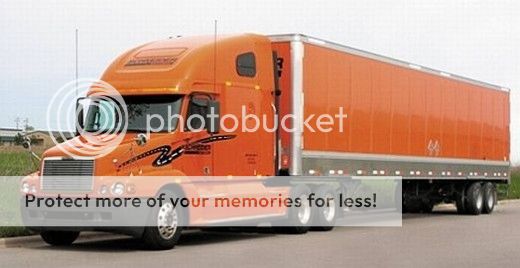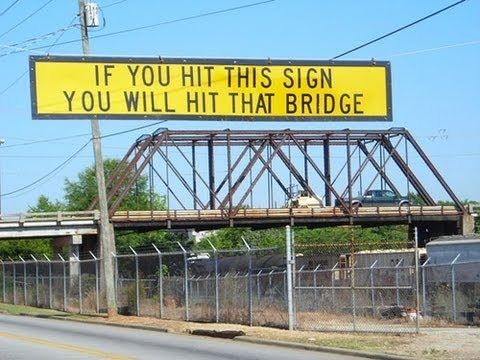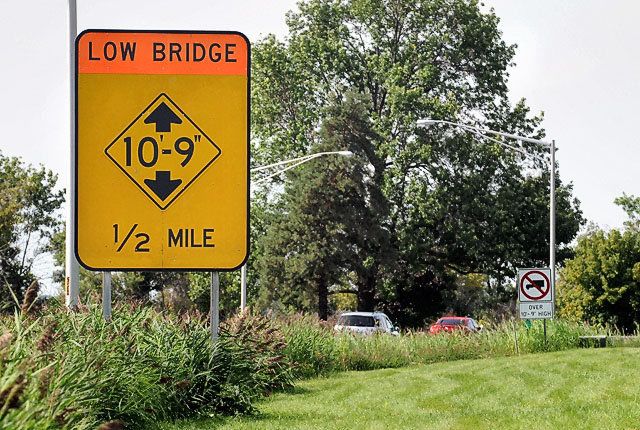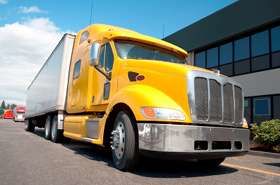Dealing With Low Bridges And Icy Roads?
Topic 12343 | Page 1

How do truckers avoid accidentally driving under low bridges or slipping on icy roads?
I see these come up the most as accidents that truckers have but what do you do as a trucker that comes to a low bridge? Stop? Turn around? Call cops/sheriff/etc. to help move you?
And trucks don't have snow chains/tires/etc. because they're too heavy and would tear up the road?
They do make snow chains for trucks and their tires.
As for the low bridge issue, that's called proper trip planning and paying attention. If you do happen to get in a sticky situation where you come to a bridge you can't pass then yes you would need to contact local law enforcement to direct traffic while you back up out of that mess and get turned around. Then you'll probably get chewed out for not paying attention and or trip planning right.

In many places in America truckers are required to carry chains, regardless if they're used. Can be fined for not carrying them. Then when the roads are covered with ice, truckers are required to put the on to climb over hills and mountains.
I'll second what Phox wrote about low bridges. Make sure you know where your going before you get there...

Good place to start is with a Trucker Atlas, link below is one choice. Other is a good GPS for Truckers, I have a Rand McNally TND730...there are others. Trucker Atlas

Good place to start is with a Trucker Atlas, link below is one choice. Other is a good GPS for Truckers, I have a Rand McNally TND730...there are others. Trucker Atlas
Ok, that's basically what I was asking. What are the resources to avoid low bridges. Thanks!
Good place to start is with a Trucker Atlas, link below is one choice. Other is a good GPS for Truckers, I have a Rand McNally TND730...there are others. Trucker Atlas
Ok, that's basically what I was asking. What are the resources to avoid low bridges. Thanks!
But don't trust that GPS too much! Mine has tried to route me under low bridges three different times, twice in Texas towns and once in Chicago. The paper atlas has a list of low clearance locations on highways, but when you're on secondary roads and especially in towns, you have to pay attention to the signs. If you're not sure, call the location and/or talk to other drivers who have been there for the best route.
TWIC:
Transportation Worker Identification Credential
Truck drivers who regularly pick up from or deliver to the shipping ports will often be required to carry a TWIC card.
Your TWIC is a tamper-resistant biometric card which acts as both your identification in secure areas, as well as an indicator of you having passed the necessary security clearance. TWIC cards are valid for five years. The issuance of TWIC cards is overseen by the Transportation Security Administration and the Department of Homeland Security.

GPS is a good tool for finding a route, but as Bud wrote, don't bet your reputation on it. It can be wrong. And it might take a much more difficult route to save a few miles, which isn't worth it.
A few other resources:
1. With Swift you can request written directions through the Qualcomm. Sometimes they were written by the customer, who knows the local area. Other times they're a mess and even flat out wrong.
2. NY DOT offers a map on their website for truckers going in to NY city. Other state agencies might do the same, I just haven't looked into it.
3. With Google Maps, Street View, you can virtually drive down streets, read street signs (including bridge clearance, "Truck Route", "No Trucks", etc) before actually driving there.
4. Sometimes the customer will offer directions on a phone message.
5. Sometimes you can call the customer, and sometimes they're helpful :)
Qualcomm:
Omnitracs (a.k.a. Qualcomm) is a satellite-based messaging system with built-in GPS capabilities built by Qualcomm. It has a small computer screen and keyboard and is tied into the truck’s computer. It allows trucking companies to track where the driver is at, monitor the truck, and send and receive messages with the driver – similar to email.DOT:
Department Of Transportation
A department of the federal executive branch responsible for the national highways and for railroad and airline safety. It also manages Amtrak, the national railroad system, and the Coast Guard.
State and Federal DOT Officers are responsible for commercial vehicle enforcement. "The truck police" you could call them.
EPU:
Electric Auxiliary Power Units
Electric APUs have started gaining acceptance. These electric APUs use battery packs instead of the diesel engine on traditional APUs as a source of power. The APU's battery pack is charged when the truck is in motion. When the truck is idle, the stored energy in the battery pack is then used to power an air conditioner, heater, and other devices

I forgot to mention on my GPS (TND730 Rand McNally) I have a software (Cost a few $'s) that notifies you have low clearance locations. It works pretty well, has kept me after missing turn from staying on a road with low clearance. You can set the height you want so your GPS (if it is compatible) doesn't give you every low clearance or take up a ton of your GPS memory...their website will show you which GPS's are compatible. Is it 100%? Probably not, but what is? Here is their link LowClearance.com
Keep in mind the bridge owner doesn't want people hitting the bridge either!
Many times there is adequate warning about coming-up low bridges (big signs on the approach). And for many, there's an easy route around them.



The city of Chicago has a hot line were if you have to make delivers in the city you can call. Tell them the address your delivering to and what freeway your coming from and they will give you specific routing.
New Reply:
New! Check out our help videos for a better understanding of our forum features

















Preview:








 TT On Facebook
TT On Facebook
How do truckers avoid accidentally driving under low bridges or slipping on icy roads?
I see these come up the most as accidents that truckers have but what do you do as a trucker that comes to a low bridge? Stop? Turn around? Call cops/sheriff/etc. to help move you?
And trucks don't have snow chains/tires/etc. because they're too heavy and would tear up the road?